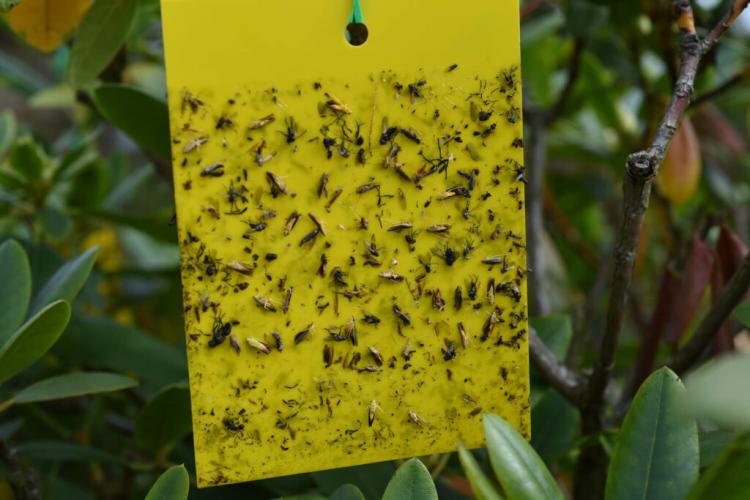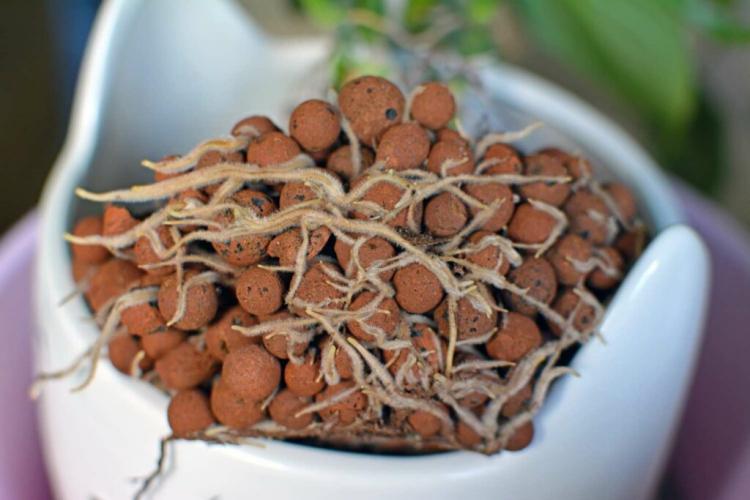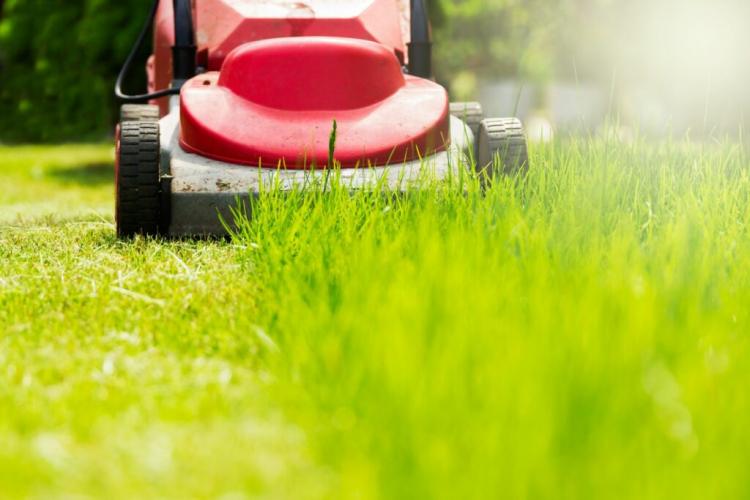Chaffinch: song, food & nest
When does the chaffinch breed, how does its song sound and how can you support it in your own garden? We answer these and other questions in our large chaffinch profile.
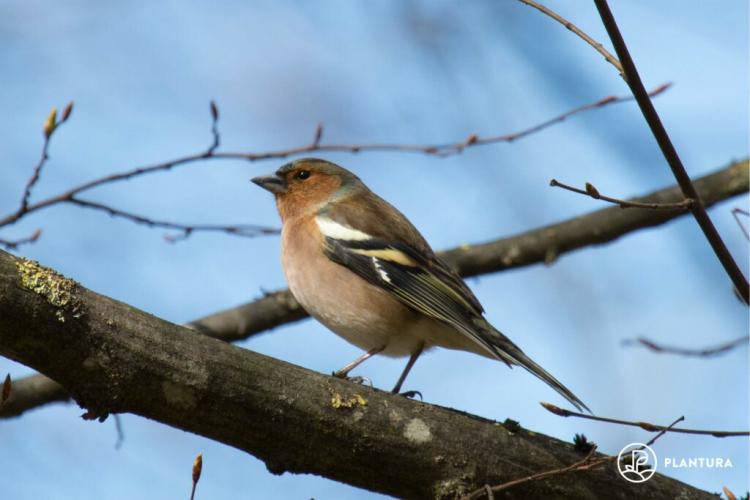
The chaffinch is a frequent guest in home gardens
The chaffinch ( Fringilla coelebs ) is one of the most widespread breeding birds of all. It is also a frequent guest in our gardens at home – and a real eye-catcher with its loud, piercing singing and colorful plumage. The colorful finch owes its name to its favorite food: the beechnuts, which it prefers to use as food in winter. However, it is mainly the males who fight the tough battle for food in the cold months. The female chaffinches usually settle south in warmer areas. Carl von Linné, the legendary Swedish naturalist and founder of modern taxonomy, observed this behavior and therefore gave the chaffinch the Latin species name “ coelebs ”, which means “unmarried” or “celibate”. Additional interesting facts about the lively garden visitor as well as other clear pictures can be found here in our large chaffinch profile.
Chaffinch: Wanted poster
Table of Contents
| size | About 14-15 cm |
| Weight | About 25 g |
| Breeding season | May June |
| lifespan | About 5 years |
| habitat | Forests, parks and gardens |
| Feed preference | Insects in summer, seeds in winter |
| Threats | Insect death, decline in natural habitat |
This is how you recognize the chaffinch
The most important characteristic of all finches is the strong, triangular finch bill, which is great for breaking up all kinds of seeds. The chaffinch is also characterized by a gray head and a reddish-brown colored chest and belly plumage in the males. Another important feature for both sexes are the contrasting white bands on the dark wings, by means of which the chaffinches can be recognized even from a great distance and in flight.

The chaffinch's powerful beak is its most important feature
How does the chaffinch singing sound?
The chaffinch's song can only be heard during the breeding season, but then it is difficult to ignore. It begins with a short series of whistling tones that get faster and faster and then turns over into a falling sound, which is also known as a “finch blow”.
The chaffinch chant sounds like this:
In addition to singing, the chaffinch also has a number of calls which, similar to a dialect, can be slightly different from region to region. The best-known call of the chaffinch is the so-called rain call, which sounds like a sharp “Rrüht” before or even during a rainfall and is therefore used in some places as a kind of weather report.
How do you recognize young chaffinches?
Young chaffinches are not yet as intensely colored as the adult birds. They have gray-green to gray-brown plumage and thus resemble the inconspicuous female chaffinch. The only features that distinguish the young birds as chaffinches are the white wing bands and the typical finch beak.
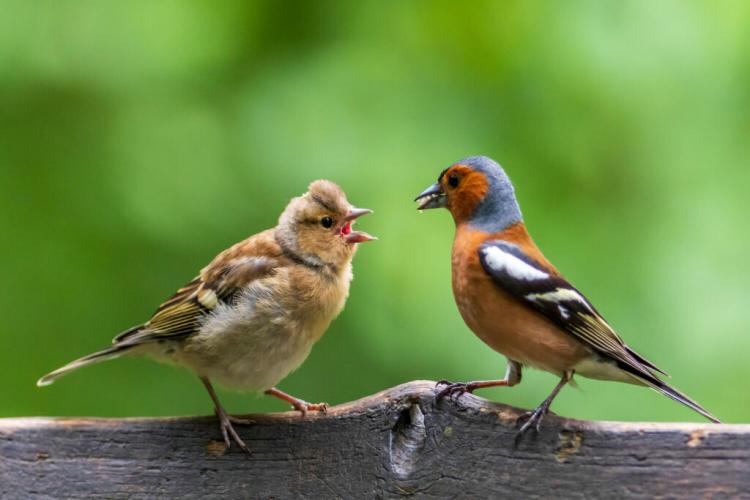
Young chaffinches are noticeably paler in color than their parents [Alec Taylor / Shutterstock.com]
How do you recognize the chaffinch eggs?
The chaffinch's clutch consists of 4 to 5 eggs, which are about 19 x 15 millimeters in size, have a bluish base color and are covered with brownish to purple-colored spots. The eggs are embedded in a hemispherical nest made of grass, moss, roots and tiny twigs, which is padded with feathers and camouflaged on the outside with lichen and cobwebs.
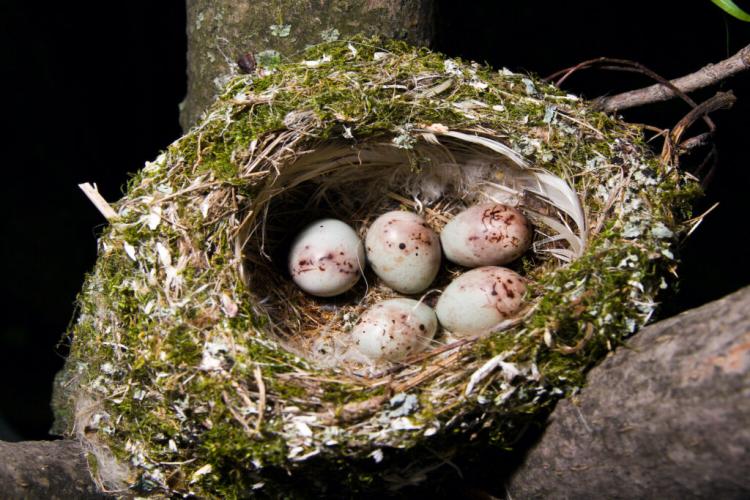
The chaffinch's eggs are embedded in a nest made of moss, grass and roots [Photo: Vishnevskiy Vasily / Shutterstock.com]
How can you tell the difference between female and male chaffinches?
The male chaffinches are very colorful and easy to recognize by the red-brown colored feathers in the chest, stomach and cheek areas. The blue-gray parting and the neck of the same color, from which a narrow collar extends to the level of the eyes, are also typical. The females are noticeably paler in color. They have a rather gray-green basic color and therefore look very similar to the female house sparrows. The female chaffinches are still characterized by the wide, white wing bands that separate them from the simpler sparrows.
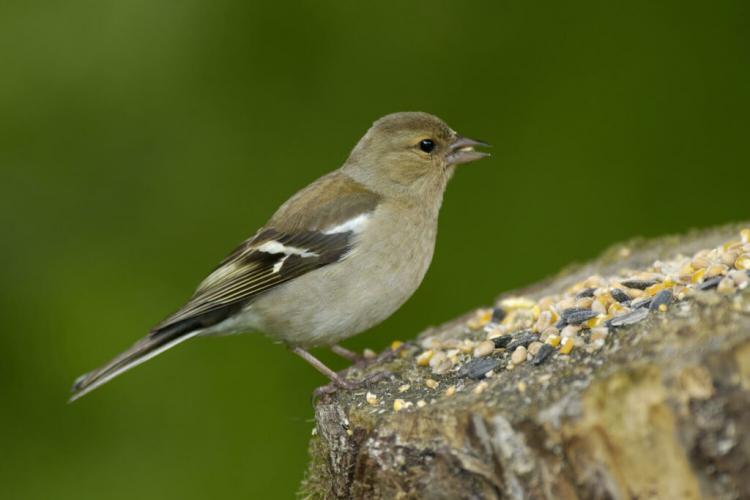
As usual in the animal kingdom, the female chaffinches are simpler than the males [Photo: Martin Fowler / Shutterstock.com]
What is the chaffinch's preferred habitat?
The chaffinch is very adaptable and broad when it comes to its habitat. It prefers to inhabit forests, hedges and thickets. But it also feels at home in parks and gardens with large trees. It is therefore not afraid of being close to humans and can often be seen at feeding places in winter. He only avoids open landscapes.
Where can you find chaffinch nests?
Chaffinches breed in thick hedges or trees. They usually build their nests in a fork of a branch – several meters above the ground. The female is responsible for building the nest, while the male guards her very closely and defends her against other male candidates. In rare cases, chaffinches can have another brood after the first brood. In this case it is started from the beginning – at a new breeding site and with a new nest.
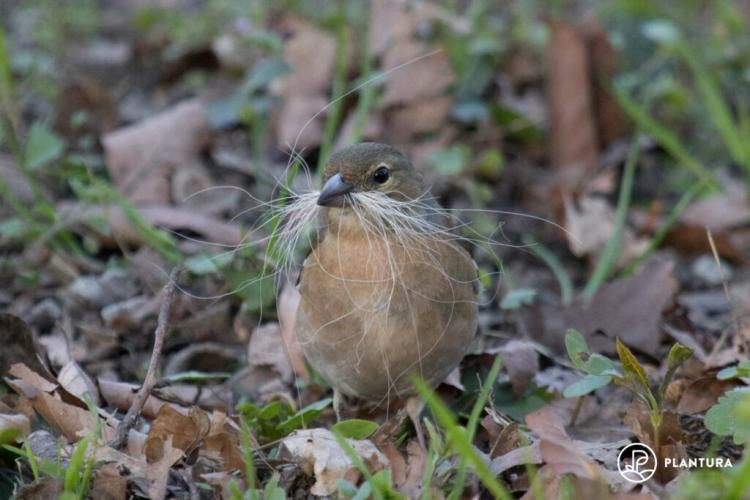
Chaffinch with nesting material in its beak
When is the chaffinch breeding season?
The breeding season of the chaffinches lasts from May to June, the exact beginning of which depends on the temperatures in spring: If the spring months are particularly warm, the finches start breeding earlier. The female incubates the eggs for 10 to 16 days. Then the young birds hatch as nests. This means that they are born blind and almost naked and are therefore completely helpless. They have to keep the nest for another two weeks while the mother feeds them. And even after the young animals have left the nest, both parents continue to support them in their search for food until they can stand on their own two feet.
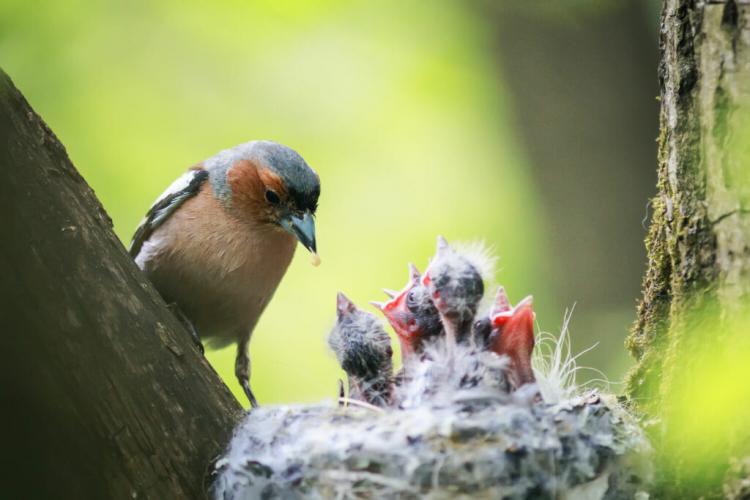
Young chaffinches are born almost naked [Photo: Bachkova Natalia / Shutterstock.com]
What does the chaffinch do in winter?
Chaffinches are partial migrants. In Germany, mostly only the male specimens spend the winter in their breeding areas. These are then often on the move in small or large groups and can be seen in droves looking for food. The females, on the other hand, usually move south and only return in the spring for the breeding season.
This is how you can support chaffinches
If you want to settle the chaffinch in your own garden or simply want to support you in your daily struggle for resources, here are some tips and tricks that can be easily implemented.
What does the chaffinch feed on?
In summer, chaffinches feed mainly on insects of all kinds. They also prefer to use protein-rich caterpillars to raise their young. In winter, on the other hand, they are vegetarian and use a wide variety of seeds, which they break open with their powerful beak.
If you want to offer the finches additional food in winter, you should therefore use grain mixtures such as sunflower seeds, broken peanuts or poppy seeds. Our Plantura litter, for example, contains a whole range of rich seeds that provide plenty of energy in the cold winter months and, in addition to the chaffinch, support many other garden birds, such as the bullfinch and the robin.
Which nesting aids are suitable for chaffinches?
Since chaffinches are free breeders and build their nests openly in trees or bushes, a nest box does not necessarily help them. Such structures are more suitable for cave breeders such as titmice or starlings. Instead, natural nesting sites should be encouraged, for example by not thinning out hedges too much in order to offer the birds a protected shelter.
How can you give them additional support?
In addition to winter feeding, you can also provide enough food for chaffinches in summer. Since they only eat insects during this time, it is important to encourage them. Therefore, if possible, the use of chemical sprays should be avoided, as these minimize the incidence of insects. If, on the other hand, you want to bring additional life to your garden, you can achieve this with the help of our Plantura beneficial insect magnet. With this seed mixture you not only create a flower meadow, but also a paradise for a large number of young garden visitors and thus a feast for chaffinches.
Another way to support chaffinches, especially in rearing their young, is by encouraging caterpillars with popular food plants such as blackberry, willow, nettle or sloe.
If you're curious and want to discover more of the variety of garden birds, take a look at our other bird portraits and get to know, for example, the goldfinch or the wren.


